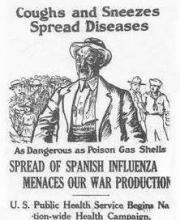One of the biggest lessons so far from the West African Ebola outbreak is the importance of early identification of infectious disease outbreaks. That’s the best way to get a quick response, and a quick response can mean the difference between an outbreak’s control or spread.
As reported from the International Meeting on Emerging Diseases and Surveillance (IMED) in early November, the Ebola experience in Africa this past year has been marked by slow responses in Liberia and Sierra Leone, followed by unprecedented Ebola spread – and quick responses in Nigeria and the Democratic Republic of the Congo, followed by declarations by the World Health Organization that Nigeria and then DRC had become Ebola-free.
Many factors play into early identification of infection outbreaks, but a new approach may be one of the best, especially once it fully catches on. It’s called participatory surveillance, and it means that everyone – or at least as many as can be persuaded – commits to regularly updating (usually weekly) a public health database on their health status.
While participatory surveillance is not being used in Africa, it’s being used elsewhere, including in the United States as the Flu Near You program. As also reported out of the same IMED meeting, Flu Near You is the best U.S. example of participatory surveillance, with a current database of about 100,000 U.S. enrollees. Ideally, the participants reply each week to a short survey that asks if they had any of 10 symptoms that can flag influenza, such as fever, headache, cough, sore throat, or fatigue.
When we first reported on Flu Near You nearly 2 years ago, it was an interesting concept just starting to roll out. Returning to Flu Near You for a second look a few weeks ago revealed that it had become a useful if still immature tool that had caught the notice of the Centers for Disease Control and Prevention (CDC).
Now it’s poised for the next step, which is where you come in: Sign up, and be active by responding to the weekly survey.
A CDC staffer in Atlanta told us that the agency already sees Flu Near You as a valuable adjunct to the flu surveillance it traditionally conducts. If the database is helpful for tracking national influenza trends with 100,000 Americans registered, imagine how much more informative it would be with 1 million, 10 million, or even more participants. The only way participatory surveillance succeeds is if people buy in and become part of the process. If enough people did that, the public health insights would soar.
Numbers are what’s holding Flu Near You back right now. Each of us has the ability to change that a little.
On Twitter @mitchelzoler


